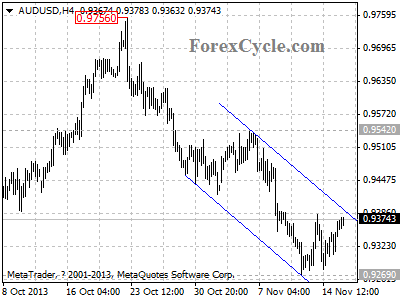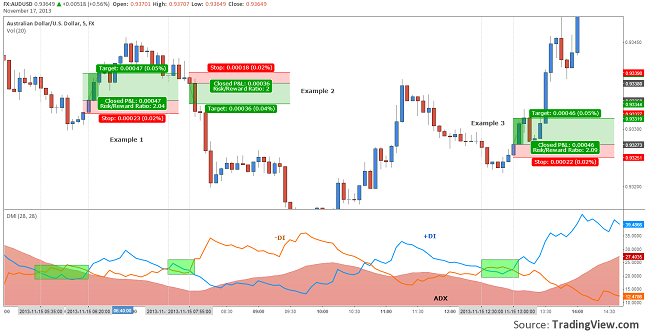By MoneyMorning.com.au
We’re bullish on the stock market.
But we’re not your average bull.
We don’t cheerlead for stocks to go higher…but we would certainly like them to go higher…and we hope they’ll go higher.
But if we ever find ourselves getting over-excited about stocks and falling for the idea that stocks can only ever go up, we make sure to check out the mainstream press.
We usually find something to snap us back to reality.
Thankfully an article on Bloomberg did the job nicely. It reminded us of the naivety of the mainstream and why we shouldn’t take this stock rally for granted…
As you should know by now, your editor is just as bullish as anyone in the mainstream.
To be honest, we’d say we’re more bullish than anyone in the mainstream. We don’t recall seeing anyone anywhere else sticking a 7,000 point target on the S&P/ASX 200 by 2015.
In fact, that’s the key difference.
We’re bullish because we know central banks will keep interest rates low (hello, the European Central Bank just cut its benchmark rate to 0.25%). These interest rates will continue to ignite a rocket under stock and other asset prices.
Because of that you’ll see a monumental, height-defying rally (some call it a ‘melt-up’ boom) that will ultimately end in an almighty crash.
That’s why we’re bullish. The mainstream is bullish for another reason…
If You Don’t See it, it Doesn’t Exist
Whereas we get the big picture of how central banks are slowly destroying economies and national currencies, the dopes in the mainstream think the central banks are helping economies.
A classic example is in the Bloomberg article we mentioned earlier. The subject of the article is gold and inflation. It also refers to attempts by US Republicans to get the US dollar back on a gold standard or at least for the US Federal Reserve to track the value of the dollar relative to gold and other commodities:
‘“[Measuring inflation against commodity prices is] a stupid idea,” Joseph Gagnon, a former Fed economist, said in an interview. “It’s pretty clear the Fed thinks so, too, since they do the opposite. They go out of their way to exclude commodities.
‘Gagnon, now with the Peterson Institute for International Economics in Washington, says the Fed tracks most closely “core” inflation readings that exclude often-volatile commodities.‘
Comments such as that show the mainstream don’t quite get what’s going on. It’s the proverbial head in the sand approach – ‘If we don’t acknowledge certain rising prices, then they don’t exist.’
That’s why the US inflation rate is deceptively low. The Fed omits volatile items when it calculates consumer price inflation. It just happens that the volatile items include food and fuel – perhaps the two most important everyday purchases for any consumer.
By not admitting this, the mainstream can continue to believe that things are fine. They must be fine, because all the fear mongering about money printing leading to inflation just isn’t true – look at the consumer price index! You get the picture.
And that’s not all.
Because they believe the economy is returning to normal, they’ve also gotten into thinking that the Fed and other central banks will start raising interest rates, which will slow stock market growth. So you’ll just get normal stock market gains.
Fools.
The Market is Riskier Than 2007
So our bet is that the speed at which the market goes up will take most in the mainstream by surprise.
They just won’t see it coming. They’ll buy stocks expecting to get 5-10% annual growth, only to end up getting 15-20% annual growth over the next two years. And because this move will surprise them, they’ll foolishly think the boom has just begun, which will cause them to put everything they’ve got into the market.
Trouble is, by then the boom could be at its peak. At that point a major bust is more likely than a continued boom.
But that’s all speculation. You can never know for sure until it happens.
That’s why despite his largely bearish view on the market, our old pal Dan Denning advised his readers to buy one particular stock that could benefit from rising stock prices.
Like your editor, Dan understands that buying any stock right now is a speculation. So he gave his readers this warning in the latest issue of The Denning Report:
‘I don’t want you to think that since I’m recommending a stock to profit in 2014, I’m sanguine about the risks in the financial system.
‘I’m anything but. In fact, the world’s financial system could be even more fragile and risky today than it was in 2007. For starters, debt as a percentage of GDP is even larger than at the beginning of the crisis.‘
Japan’s Lesson for Australian Investors
We’ll go one step further than Dan. We’ll say that the financial system is even more fragile and risky today than it was in 2007.
There’s no doubt about that in our mind. That’s what makes stock investing so tricky for investors today. You have to invest because, despite what the official inflation statistics say, central banks and governments are devaluing your wealth.
If you fall for their propaganda and believe that a low bank deposit rate is fine because inflation is low, you’re heading for a rude shock. On the flip side, if you know they’re ‘fixing’ the inflation figures but you won’t play stocks because you think it’s too risky, we’re afraid to say you’re heading for a rude shock too.
There was much wailing and gnashing of teeth when Japan devalued its currency last year. Many claimed it was devaluing Japanese wealth. And it was. But only for those Japanese who refused to invest in stocks.
Over the past year the Japanese Nikkei225 index is up 68%. That is more than enough to outweigh the devaluation of the yen. It was a good time to own stocks.
Those who missed out were the poor who couldn’t invest and the stubborn who refused to invest. So far, both groups have turned out to be big losers in the central bankers’ game.
If the same thing plays out in the Australian market (which is almost certain), the last thing you want as an investor is to stay on the sidelines. The stock market may not be pretty right now, but if you want any chance of growing your wealth over the next two years it’s the best chance you’ve got.
Cheers,
Kris+
Special Report: The ‘Wonder Weld’ That Could Triple Your Money
Join Money Morning on Google+

By MoneyMorning.com.au













